Foraged Dashi Broth with Reedmace and Spoot Clams
“Stop playing with your food!”
I’m sure most of us have heard that at some time, and many of us will have said it too. But, modelling moonscapes from mashed potato or smiley faces from bacon and eggs aside, I reckon playing with your food has to be the best way to cook tasty, novel food and have a lot of fun at the same time. Harvesting wild ingredients feeds some wondrous building blocks into this culinary game too. Trial, error, joyful discoveries, flights of fancy, playful one-offs and random happenchance are my ideals of cooking, not slavishly following someone else’s tastes.
It is interesting how often sound cooking principles, when brought to bear on wild ingredients, tend to loop back into classic combinations and approaches. There is very little that is truly “new”. “Playing with my (wild) food” usually starts with raw nibblling in the wild, progresses through combining two or more plants in my mouth, to more complex cooking and preserving back home, until I find a way of eating things that I like. Then, after a while, I do some research to see why it worked, or share it with a food-obsessed friend who will tell me i’ve made something traditional with non-traditional ingredients. I regularly stumble into a classic technique or flavour combination, using only free ingredients, with next to no food miles. Let the wild guide you…
Anyway, this bowlful of fresh umami-rich joy, that manages to be both homely and pretty damn sophisticated at the same time (why are comfort food and high-end dining so rarely bedfellows?), came about as a result of scrambling through my fridge after a weekend guiding foraging walks. I tend to accumulate bits and bobs of interesting wild stuff on those weekends, and have leftovers from the wild cook-ins we do, plus bits of the tasters and preparations I bring along.
My interest in only ever eating spoot clams raw isn’t shared by everyone, and I had fridge full – all wriggling, probing and making rude noises. Reedmace shoots had just come into season. Adorable sea kale shoots and a quarter jar of fermented wild garlic (and some of the fresh item) lurked in my cool box. I also had some pepper dulse, sea lettuce, laver, dulse and sugar kelp variously fresh or dried. And powdered dried cep. I always have that. Its like cheating. Except when you’ve picked, kissed, dried and ground every one of them, it can’t really be…
So I put them together using instinct and what knowledge i’ve gleaned from good meals and chefs over the years (thanks to umami-obsessive Craig Grozier in particular, for recognising my mushroom/seaweed concoctions as insta-dashi, and being endlessly enthusiastic on the subject), and it came out…well, awesome.
It takes about the same amount of time to make as a pot noodle, and you really don’t have to have all the stuff I mention here, other than the dashi ingredients.
Go play.
Dashi, a seaweed-based broth, is all about umami – that elusive 5th taste sensation, that makes us salivate, gets our gastric juices flowing, and adds richness and bass-notes to anything it accompanies. Umami comes from glutamates, which are naturally present in many things – notably breast milk – small wonder it makes for great comfort food!
Glutamates are often added to enhance the flavour of processed foods, thereby saving money on other flavourings, and adding a more-ish addictive quality. A mixture of 98% monosodium glutamate (MSG) and 2% disodium ribonucleotides (E635) has four times the flavor enhancing power of MSG alone. These chemicals are seldom good news for your health in processed foods. So why am I banging on about them here..?
Because they aren’t all made in a lab. They occur naturally, and wholesomely, in meat, fish, smoked and fermented products and, of most interest here, in seaweeds, fungi, ferments and shellfish.
Lets reclaim these abused chemicals.

Insta-dashi stock – made with dried, powdered ceps, cauliflower fungus, orange birch bolete, gutweed, pepper dulse and laver
Traditional Japanese dashi is made with species of kombu (kelp seaweed) native to Northern Japan, and bonito flakes (known as katsuobushi, an intensely smoked, moulded and dried preparation of skipjack tuna). For the geeks among you, its the seaweed that provides the glutamtes and the fish that turbo-charge it with ribonucleotides.
We can do similar things with indigenous Scottish ingredients. Dashi purists will tell you it’s not the same. And they’d be right. It’s better. Not necessarily because it tastes more intensely umami, but because it is our native umami, its delicious, and its constituents haven’t been dubiously harvested and flown all the way around the world.
For the insta-wild-Scottish-dashi stock:
- 1 tablespoon dried cep powder. Other dried fungi will do – I must confess, shiitake work even better. You won’t get them in the wild in the UK, but they are grown commercially here now or you can grow your own.
- 8inch length of dried sugar kelp, or other dried kelp such as oarweed or forest kelp.
- 1 tablespoon dried, powdered laver and/or dulse
- 50g of finely flaked smoked haddock
- 3 dash of mushroom ketchup
- 1 litre water
Add all the ingredients to a pan and bring to the boil, removing the sugar kelp as it reaches boiling point. Turn off the heat and set aside.
For the soup (serves 4):
- 10 spoot clams. Make sure they are alive and wriggling before you clean them, remove the main muscle and chop into 1cm pieces. They will be very lightly poached when the dashi is added, retaining all their tenderness, sweetness and umami. Anyone squeamish about this could steam them for a few minutes first, but they won’t be as nice. Incidentally, if you freeze the spoot meat then defrost it, it becomes even more succulent.
- A generous handful of wild garlic or wild leeks, plus their flowers/flower buds
- 2 tablespoons of fermented wild garlic or leeks
- 2 reedmace shoots, cleaned, peeled to their succulent core and finely sliced into very pretty discs
- A handful of sea kale shoots, or their baby florets
- Pepper dulse – preferably 2 tablespoons of fresh fronds, or 1 teaspoon of dried powder
- A small handful of fresh of dumont’s tubular weed
- Dried sea lettuce for sprinkling
Finely chop the pale stems of the fresh wild garlic/leeks and sauté lightly in a little rapeseed oil.
Add the dashi stock to the pan and heat through.
While it is heating, divide all the spoots, fermented alliums, sea kale, pepper dulse and tubular weed between 4 open bowls.
Pour over the hot dashi.
Strew with the remaining wild garlic (finely shredded), the flowers/buds, the reedmace and finally the sea lettuce.
The seaweeds should provide all the seasoning you require, but sometimes I drizzle in a bit of soy sauce….which is also rammed with umami! 😉
***After writing this article, I came across this excellent study of comparative glutamate/umami content of Nordic seaweeds by the Nordic Food Lab. Those of a scientific culinary persuasion will thoroughly enjoy it. Its evidence generally concurs with my more random discoveries, though it appears the umami in my dashi may come more from dulse, nori and mushroom powders than sugar kelp.***
Related pages:
For in-depth films and discussion of seaweeds, check out my Seaweed Webinar.
“The webinar was amazing! You are a good storyteller. Scientific information, combined with tips and beautiful picturing. 👏” – Kanlenaki on Instagram
“This was absolutely brilliant, thank you so very much for being so generous with your knowledge! The webinar format of videos and live worked fantastically!” – Sarah Hobbs, Webinar chat comments
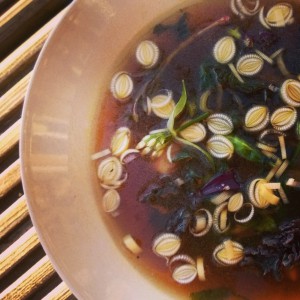



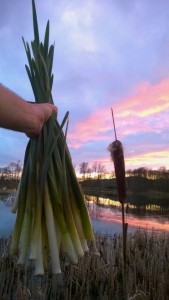

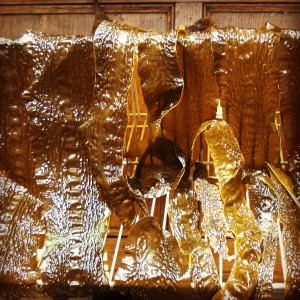
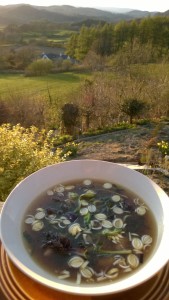
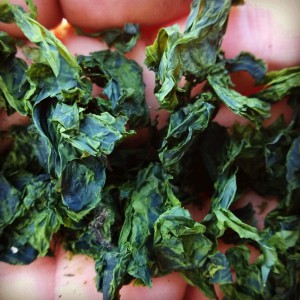

4 Comments
Sounds SO delicious!
It sounded good until the rapeseed oil, a lot of us are intolerant to that.
Well I guess its easy to substitute out!
I scraped the pollen off the heads and mixed with a little garlic oil, a good idea would be to keep the cooking water (forgot to say also cooked the pollen heads for 5 mins or so) as it contains a lot of the lovely flavour as well as nutrients. The flowers are Ox Eye Daisy, a clean tasting wild salad flower in season now, and filling, too!